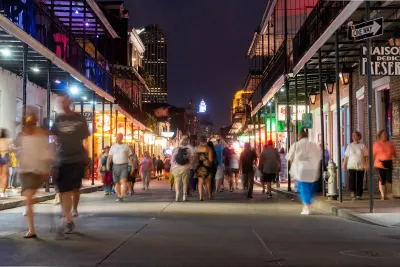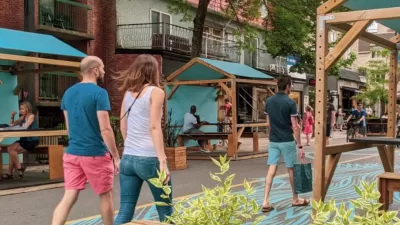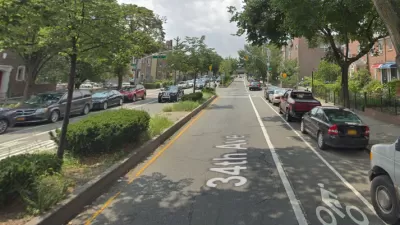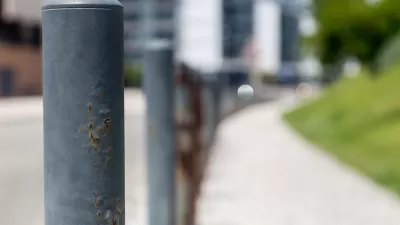The conversation around pedestrianizing public streets isn’t new — think Times Square. Could one of America’s oldest streets lead the way in a revival of the pedestrian mall?

Pedestrian malls, while rarer than in European cities, aren’t new to the United States. Times Square, Santa Monica’s Third Street Promenade, and Fremont Street in Las Vegas are just a few examples of pedestrianized zones in U.S. cities (some more quasi-public than others).
In fact, according to a Streetsblog USA article by Kea Wilson, “city leaders blocked cars from entering more than 200 downtown pedestrian malls across America throughout the 1960s and '70s, hoping to replicate the success of the shopping-oriented pedestrian plazas that are a fixture across much of Europe.” But the isolated locations of many of these plazas and the lack of cultural connection with the concept led to the failure of many to thrive.
The New Year’s attack on Bourbon Street, perpetrated in part with a large truck and aided by a lack of robust safety infrastructure, sparked a new call to pedestrianize Bourbon Street in New Orleans and make it safe for people walking all the time rather than on select occasions, with advocates saying that “pedestrianizing Bourbon Street would simply strengthen the temporary barriers that are already supposed to go up during periods of peak foot traffic but often don't, immediately making the tourist Mecca safer from all manner of vehicular threats.”
Closing a space permanently to cars can make it easier and more affordable to build secure infrastructure and limit ingress while still planning for emergency vehicles. If an already popular pedestrian destination like Bourbon Street would commit to it, other U.S. cities might follow suit.
FULL STORY: Could the Comeback of the U.S. Pedestrian Mall Start on Bourbon St.?

Maui's Vacation Rental Debate Turns Ugly
Verbal attacks, misinformation campaigns and fistfights plague a high-stakes debate to convert thousands of vacation rentals into long-term housing.

Planetizen Federal Action Tracker
A weekly monitor of how Trump’s orders and actions are impacting planners and planning in America.

In Urban Planning, AI Prompting Could be the New Design Thinking
Creativity has long been key to great urban design. What if we see AI as our new creative partner?

How Trump's HUD Budget Proposal Would Harm Homelessness Response
Experts say the change to the HUD budget would make it more difficult to identify people who are homeless and connect them with services, and to prevent homelessness.

The Vast Potential of the Right-of-Way
One writer argues that the space between two building faces is the most important element of the built environment.

Florida Seniors Face Rising Homelessness Risk
High housing costs are pushing more seniors, many of them on a fixed income, into homelessness.
Urban Design for Planners 1: Software Tools
This six-course series explores essential urban design concepts using open source software and equips planners with the tools they need to participate fully in the urban design process.
Planning for Universal Design
Learn the tools for implementing Universal Design in planning regulations.
Gallatin County Department of Planning & Community Development
Heyer Gruel & Associates PA
JM Goldson LLC
City of Camden Redevelopment Agency
City of Astoria
Transportation Research & Education Center (TREC) at Portland State University
Jefferson Parish Government
Camden Redevelopment Agency
City of Claremont





























